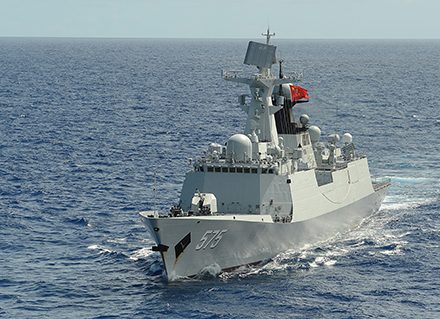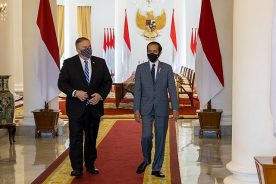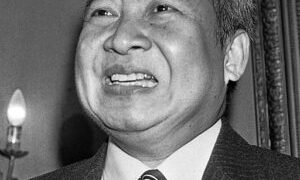In August 2020, the foreign ministers of ASEAN member states signed a joint statement “on the importance of maintaining peace and stability in Southeast Asia.” In one of the articles in the statement, ASEAN member states agreed to reaffirm the Zone of Peace, Freedom, and Neutrality Declaration (ZOPFAN) that was signed in 1971. This practice was followed in the subsequent ASEAN Summit held in November 2020, where the organisation reaffirmed its neutrality in Southeast Asia. However, looking more closely, it has been five years since the last time “neutrality” was included in high-level ASEAN documents.
The Background of “Neutrality” in ASEAN
Behind the reaffirmation of neutrality in ASEAN are growing uncertainties in the changing geopolitical landscape, as stipulated in the August statement. Growing tension between China and Quad members, in particular the United States and India, may have influenced policymakers to reaffirm their commitment to ASEAN neutrality. The 1971 ZOPFAN Declaration had a controversial story behind its formulation, as explained by historian Nicholas Tarling. Malaysia, as the main proponent of neutrality in Southeast Asia, sought guarantees from the United States, the Soviet Union, and China on Southeast Asian neutrality, as they believed that national fiscal policies would be better allocated on social services. Indonesia saw the notion of Belgium-style neutrality guaranteed by other nations as a violation of their “free and active” foreign policy and rejected the scheme of foreign guarantee. They countered with a proposal that neutrality in Southeast Asia should be guaranteed by ASEAN member states themselves. The Indonesian proposal was accepted, and no foreign states were requested to act as guarantors.
However, due to diverse national interests and the need for consensus, The ZOPFAN Declaration left the interpretation and means to achieve regional neutrality up to the capacity of each member nation. In other words, there would be no unified framework on how to ensure that Southeast Asia maintained its neutrality. Indeed, the ASEAN Political-Security Community Blueprint upheld ZOPFAN as a political instrument, but it did not explicitly explain how to create a neutral Southeast Asia. To this day, ASEAN has not yet implemented anything that signifies its neutrality commitment because there is no specific framework or guidance to refer to.
The Lack of Framework
The lack of a united framework to act as guidance endangers the security and credibility of ASEAN, as rogue member states could seek to prioritise narrow national interests at the expense of regional commitment to neutrality. If one member state invites foreign powers to opened up a military presence in Southeast Asia, including but not limited to logistical base and garrison forces, most likely the adversary of that foreign power would also want to have their presence as an act of classic balance of power. Hu Jintao, the former president of the People’s Republic of China, expressed this phenomenon clearly in his speech about the “Malacca Dilemma”, in which he asserted that, as the choke-points in the Malacca Straits are vulnerable to interdiction, the Chinese Navy should project its power to mitigate that possibility.
Currently, the United States has a military presence in Singapore, while the United Kingdom has a military presence in both Singapore and Brunei Darussalam. Regarding recent Pentagon reports that the Chinese military seeks to build its military presence in Southeast Asia, it should be noted that Beijing is just following its policy according to the Malacca Dilemma: if the United States and its allies forcefully prohibit Chinese trade in the Malacca Strait, China would respond by deploying their military to eradicate this threat. The result could see the whole of Southeast Asia become their battlefield.
The Case for Armed Neutrality
For all ASEAN member states to reach an agreement on creating a framework to achieve regional neutrality, political will itself would not be sufficient to deter those who seek to violate this neutrality. Legal and political deterrence needs to be bolstered by military deterrence. The stronger a neutral party’s military is, the less likely it will be dragged into the conflict, as the cost of violating neutrality is higher and will be abandoned if the probability of victory is small.
From a legal perspective, armed neutrality is indifferent to normal neutrality. Under Hague Convention (V) 1907, which has become customary international law, neutral parties are allowed to use force if their neutrality is infringed by a belligerent, and under the UN Charter Chapter VIII, regional collective security arrangements are allowed. However, former US Secretary of State Henry Kissinger may differ. In his analysis of Austrian foreign minister Metternich, Kissinger signifies armed neutrality as a policy of a willingness to engage deliberately the contesting powers while maintaining its legal position as a neutral party, not a belligerent. With a strong national capability, Kissinger argues that mediation effort by an armed and neutral party would be more influential in comparison to the effort of a less powerful third party.
Although ASEAN does not use the term “armed neutrality” in any of its documents, Kissinger’s explanation of the goal of armed neutrality is exactly what ASEAN wants it to be in an era of renewed great power competition. The ASEAN Outlook on Indo-Pacific (AOIP) seeks “ASEAN Centrality” and “Inclusivity”, where it dictates ASEAN primacy in conducting pacific settlement of disputes with all stakeholders. However, while it engages with powerful stakeholders such as China and the United States, it maintains a position of neutrality (as mentioned in the 2020 joint statement) and does not take sides in the quarrels of other power. Although defence integration between ASEAN member states has progressed, particularly in the COVID-19 Pandemic era, there have been no renewed talks on the concept of neutrality in ASEAN.
Armed Neutrality with ASEAN Characteristics
For diplomatic reasons, the term “armed neutrality” may never come into ASEAN documents due to its ambiguous connotations; after all, Kissinger was a realist and had some controversy himself. However, the practice in which a neutral party possesses a strong and cohesive capability to influence the pacific dispute settlement process should be taken into account by policymakers. In this regard, “strong” and “cohesive” should be underlined to develop the framework in which ASEAN defines its neutrality. “Strong neutrality” means that ASEAN has to possess the minimum military capacity required to show a force of deterrence, by setting up a multinational rapid response-capability unit. “Cohesive neutrality”, on the other hand, means that all ASEAN member states would maintain an unequivocal voice on the policy of regional neutrality on the international stage. Whether it would be the United Nations or other multilateral forums, all ASEAN member states should support each other in reaffirming ASEAN neutrality. No member should make statements that undermine and questions the credibility of ASEAN neutrality.
The ideal implementation of this policy would mirror that of the European Union Battlegroup (EU BG), but other examples should also be taken into consideration, such as the African Standby Force (ASF) and the Peninsula Shield Force (PSF). The EU BG, while still needing development, would be the most effective and efficient example of the three, as it has a clear command-and-control hierarchy, would only take 5-10 days to be deployed and could be continued to 120 days until further instructions are received. Although the ASF and the PSF, also possess rapid response capabilities, are a compromised version where the command-and-control hierarchy is in a legal grey zone to gives member states more political leverage in the decision to intervene or not. Although the current state of ASEAN might prefer the ASF-PSF model, it should not be a reason to decline reforms that would introduce definitive terms on the division of power between the regional organizations and the member states. Even the African Union is on its way to reform the ASF.
Reform is Paramount
Implementing this policy will mean that ASEAN will be confronted by the question of the need for institutional reform. Conflicts, including territorial matters between member states, are mostly solved by maintaining the status quo for the sake of stability. But the decades-long practice of status quo primacy is hindering the development of trust and identity-building efforts. As each dispute arises, such as the Exclusive Economic Zone (EEZ) intrusion of one state into another due to the lack of agreement, public opinion turns to nationalistic sentiments, risking the progress of ASEAN’s integration efforts as governments account for their constituents’ positions. Therefore, this practice of maintaining the status quo should be replaced with a committed diplomatic or legal approach to the conflict settlement mechanism, with a clear timetable and reports of progress to the public. These last two are most important for the authority to show accountability to the people, thus increasing trust in the unity of ASEAN.
Quad and the Test for Indonesia’s Leadership in ASEAN
Will the initiative complement or sideline the existing regional architecture built by ASEAN?
The alternative to this kind of reform is the continuation of the traditional “ASEAN Way” doctrine: bury the dispute, prioritise stability, focus on the economy, and political relations will improve by themselves if each state focuses on their own issues. This doctrine could have worked in a world where politics and economic issues are separated, such as during the Cold War. However, the advent of globalization and digital technology makes it hard for governments to keep the economy and politics on a separate course, as the call for a moralistic foreign policy is becoming stronger. This phenomenon is clearly shown in the recent Australian diplomatic confrontation with China in regards to the Uyghur and Hong Kong issue, despite the strong trade relations between the two countries. The recent ISEAS report also shows that economic influence does not necessarily translate into good diplomatic relations between China and ASEAN. This puts the notion of progress from a strong economic relationship towards a strong political relation into question.
China and the United States, as superpowers in the Pacific, will benefit from this policy as long as ASEAN can prove its neutrality continuously. The main concern of the United States is the status of the rules-based international order that it has built since the Second World War; a key component of the rules-based international order is the “Free and Open Indo-Pacific” (FOIP). ASEAN’s version of armed neutrality would not contradict the FOIP as it would not disrupt peacetime freedom of navigation. Once again, it should be emphasised that ASEAN’s rapid response should only be deployed in times where conflict arises on its doorsteps. If there is no open conflict, then the unit would not be deployed. Likewise, China would benefit from a truly neutral ASEAN as long as the economic relations between the two go unhindered. With the negotiation of a South China Sea Code of Conduct nearing its scheduled completion, the elephant in the room of China-ASEAN relations will be removed, and thus economic cooperation between China and ASEAN will attract less resentment from the public. Assuming China’s military buildup is meant to defend its homeland, they should have no problem with ASEAN upholding its neutrality. Besides, the recent ASEAN-China foreign ministers meeting in Chongqing implies that China has finally agreed on a South China Sea Code of Conduct that follows the 1982 UNCLOS and other relevant international law.
The current version of ASEAN is inadequate to implement a robust neutrality enforcement policy that follows a “strong neutrality” and “cohesive neutrality” principle, as rigorous reform in regards to settling the multiple disputes between member states is needed to boost trust and confidence between member states. If ASEAN is serious about guaranteeing its neutrality, it should develop a framework for how to achieve it, with the overall goal of increasing its capacity to enforce armed neutrality in Southeast Asia. The upcoming ASEAN Summit, scheduled for October 2021, is an opportunity for the organisation to finally introduce a turning point in its commitment to neutrality. ASEAN should make it clear that it will not be lenient in the face of any neutrality violation. Thus, reforms in regards to dispute settlement mechanisms are needed for ASEAN to become more regionally integrated, and after that, a strong and cohesive regional neutrality could be implemented successfully.
 Facebook
Facebook  Twitter
Twitter  Soundcloud
Soundcloud  Youtube
Youtube  Rss
Rss 



